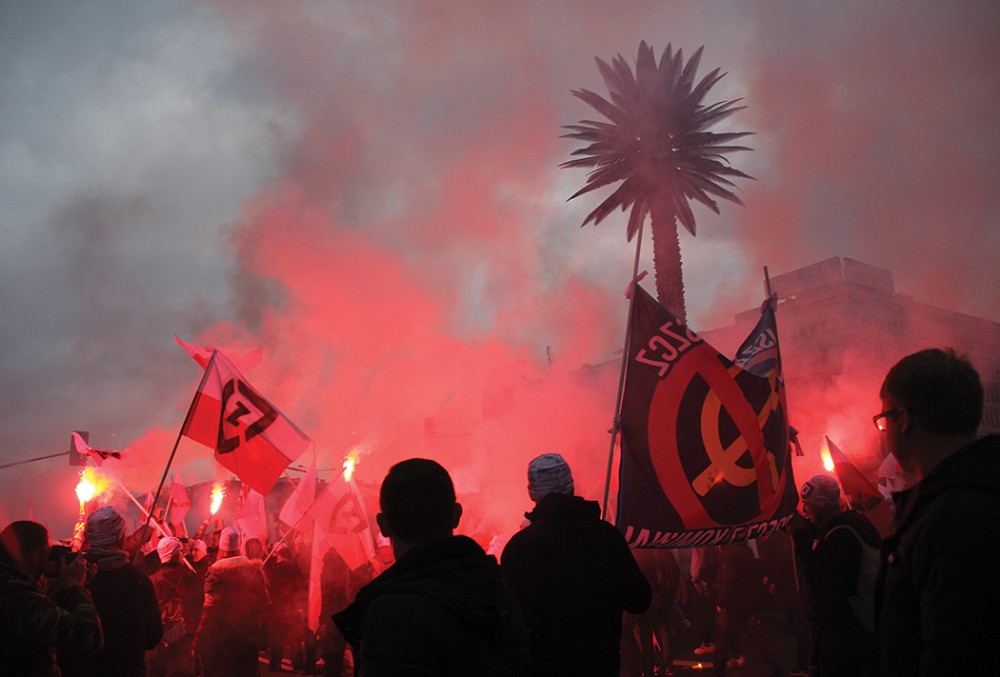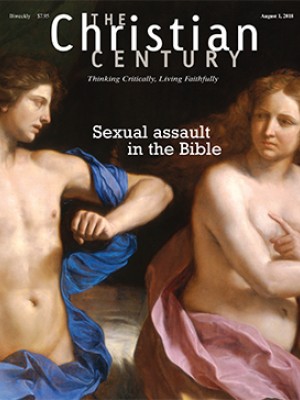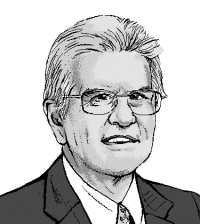The Polish far right's complicated relationship with the Catholic church
In the rise of European secularism, Poland is an exception. Not in the rise of right-wing extremism.

Amid the general picture of religious decline in Europe, Poland remains one of the few nations where the traditional institutional church—in this case, the Roman Catholic Church—remains vibrant. But in recent years, Poland has been distinctive in other ways, with its government’s drift to illiberal democracy and authoritarian populism, and the rise of extreme right groups. To what extent do these disturbing trends relate to Christian ideologies, and how has the church responded to the new situation?
Every remark about the rise of European secularism includes an exception for Poland. The Catholic Church retains the allegiance of close to 90 percent of Poles, and religious practice remains at levels that Western Europe has not known since the 1950s. Vocations and mass attendance are both high, and a large proportion of lay believers regularly participate in pilgrimages. Clergy abuse scandals have had a far smaller impact than in other nations.
Read our latest issue or browse back issues.
Historically, elements within the Polish church have been closely aligned with ultra-right and anti-Semitic views, and it would be amazing if the church was anything other than viscerally anticommunist. In modern times, the church overwhelmingly followed the lead of the late Pope John Paul II, with his devotion to human rights and his close friendship with Jews. But older far-right ideologies survived, and they have flourished anew in the present century.
One leader is priest and media mogul Tadeusz Rydzyk, whose Radio Maryja has for 20 years broadcast radical nationalist material. Some Catholic hard-liners—the so-called sedevacantists—believe that the Vatican has so betrayed the true faith that there has for some years been no legitimate pope.
The most controversial political movements include the small but visible National Radical Camp and the All-Polish Youth, which coalesce in the National Movement (Ruch Narodowy, RN). These groups direct their ire against Islam, homosexuality, and anything that might contradict their vision of a pure, white Poland. (The country’s Muslim population is microscopic, perhaps 0.1 percent of the whole.) Far-right posters and racist images often appear on the streets. Although some of the sects are neo-pagan, most espouse some degree of Catholic rhetoric and symbolism.
Ultra-rightists are particularly in evidence during the annual Independence March, which commemorates the nation’s restoration in 1918. Besides attracting many thousands of ordinary patriots, this gathering gives far-right groups like the All-Polish Youth the opportunity to parade under extremist banners, proclaiming their loathing for Islam and immigrants generally. The 2017 event drew some 70,000 and featured chants of “Pure Poland, white Poland!” Political observers nervously await the parade this coming November, which will mark the centennial of independence.
The far right’s relationship to Catholicism is a delicate matter. The mainstream church has zero sympathy for the far right and condemns racial and ethnic hatred. Yet much of the far right’s appeal lies in its invocation of Christian nationalism, its use of Catholic imagery and history, and its appeal to a Great Catholic Poland. Whatever their degree of personal piety, rightist groups celebrate their national pride with special pilgrimages to the great Marian shrine of Jasna Góra. That poses a dilemma for clergy, who must decide exactly which symbols and banners might be acceptable and which forbidden. Antiracist activists express frustration that the church hierarchy does not more harshly denounce the far right and its Catholic pretentions. They think nostalgically of the thundering blasts with which John Paul II would have crushed the racist sects.
Also problematic is the church’s relationship to the government, which since 2015 has been in the hands of the national conservative Law and Justice Party (Prawo i Sprawiedliwos´c´, PiS). Although PiS is a democratic party, its constitutional and judicial reforms have provoked mass protests and intense controversy. The government also speaks the language of Catholic and Christian nationalism, although with different implications than that of the extremist sects. When government officials critiqued last year’s Independence March, they attacked some singularly offensive slogans rather than denouncing the sects as a whole. Alarmed by authoritarian tendencies in Poland and in neighboring Hungary, the European Union has proposed sanctions against these critical eastern members.
Through the struggles of the past three years, one would have thought that the Catholic Church would carry immense weight as the moral conscience of the nation, the role it so thoroughly earned during the communist era. Yet the church largely abstained from the controversy over judicial reform and refrained from condemning PiS policies. Presumably, the hierarchy is broadly sympathetic to those changes, and most clergy support PiS. In turn, the government has favored Catholic positions on religious education in schools and defends the country’s strict abortion laws.
The great danger is that close identification with any one party runs the risk of stigmatizing the church. In a worst case scenario, the fall of that political cause would bring church loyalties down with it—even in Poland.
A version of this article appears in the print edition under the title “Far-right piety in Poland.”






